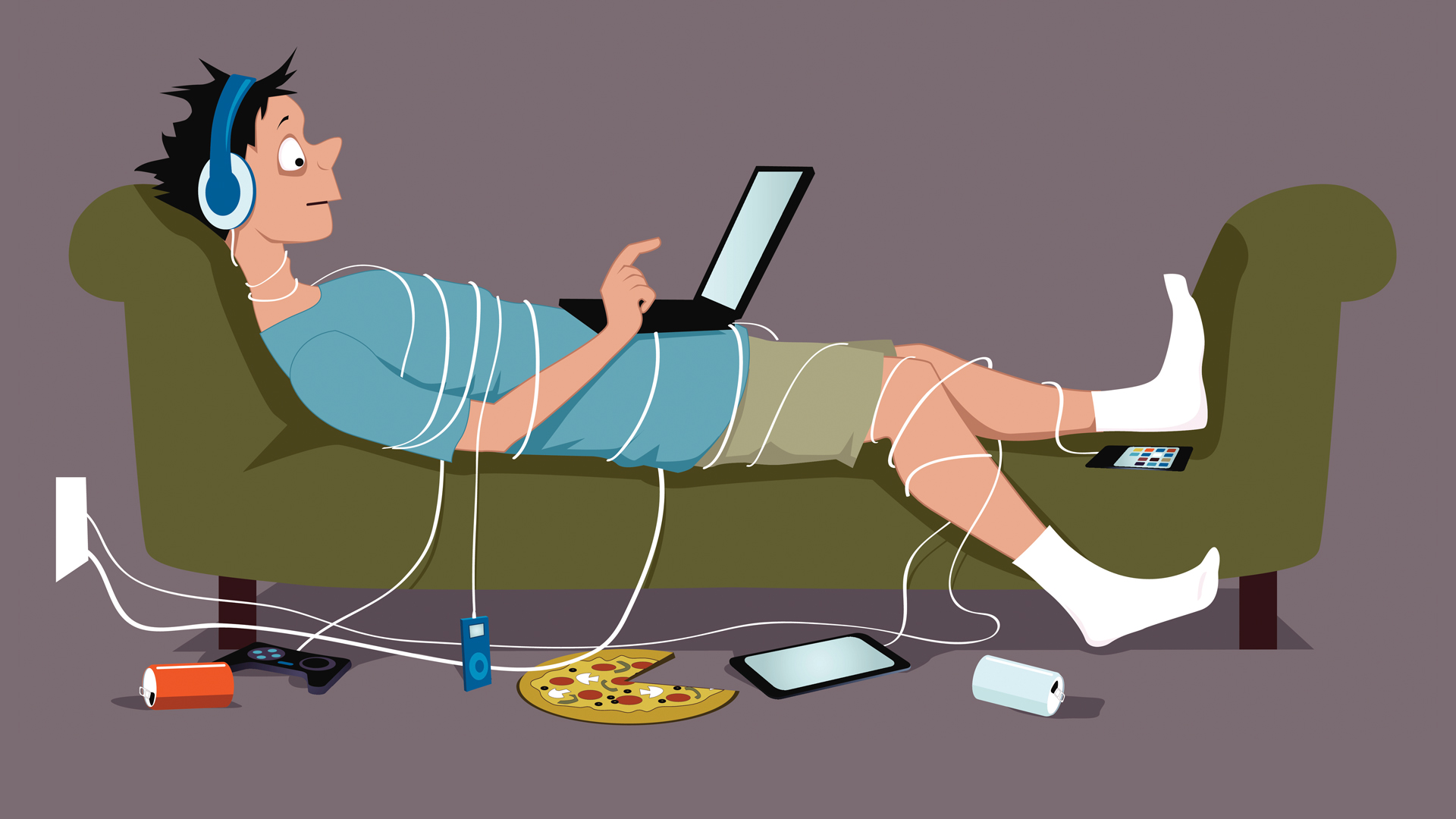
In the Middle of a Mission – Tackling the Technology Question for Children and Teens
By Jodi S. W. Whitcomb, MS
My son is 19 years old and the other day I discovered a mess left from his living room lunch break. I opened the door to the basement rec room where he was playing video games and asked him to please come upstairs and take care of the trash and dishes to which he replied, “I can’t right now. I’m in the middle of a mission.”
I stood at the top of the steps. For a moment I was going through my thoughts, censoring all of the statements I WANTED to say to him. I settled on a firm, persistent demand for him to clean up. I did not let him off the hook. Lucky for him he did come upstairs; I don’t know if he failed the mission.
It would be easy to point fingers at this young generation and say, “They have a real problem.” That is, until I was lying in bed the other morning scrolling through my Facebook feed when I realized I only had 15 minutes to get out the door. I looked at the clock and saw that I had been there for 45 minutes just staring at Facebook, totally absorbed with my cousin’s posts about her family vacation to Washington DC and my friend’s latest lament about her son’s bedtime tantrum. Before even getting out of bed in the morning I check my email, check my messages, check Facebook, etc. etc. This is my life, and I know I’m not alone. I look around me in stores and grown adults are walking around, heads down and buried in their cell phones, not paying attention to anything around them. In restaurants I routinely see couples out to dinner and both of them are sitting with their noses in their phones, not interacting with each other hardly at all.
During the development of the DSM 5 the idea of addiction to internet gaming and/or the internet in general was significantly examined. Is an addiction to the internet a distinct illness deserving of its own diagnostic criteria and description, or is it simply one possible symptom of other underlying disorders or co-morbid social issues? Is our dependence on media and the internet an addiction at all? At this time the DSM 5 does not identify internet addiction as a separate mental disorder. It does, however, list Internet Gaming Disorder as a condition that should be researched further.
So, how does a parent or teacher know when a child or teen has crossed over a line when it comes to media or internet use? Is it a problem or is it just our culture now?
WARNING SIGNS – WHEN DOES IT GO TOO FAR?
In the world of mental health, professionals generally look for a disruption in regularly expected functioning due to the condition or illness; in other words, a problem becomes a real clinical issue or disorder when it interferes with typical day-to-day life including school, job, family, relationships, basic health, etc. There are certain barometers in a child’s life that help us as caring adults assess if something is harming a child. If you notice these warning signs in a child’s life you should reach out for help from professionals in that child’s school, a doctor or therapist, a trusted religious leader or someone in a position that could provide you and the child with support:
- Academic performance – You should be on alert for a steady decline or a sudden drop in performance at school, as that may indicate a legitimate problem.
- Sleeping and eating habits – e.g., chronic problems going to bed and getting up on time, being overly fatigued, falling asleep during regular waking hours, not eating regular meals due to internet use or gaming, refusing to eat because it may affect performance on the game, only eating while gaming, etc.
- Intense emotional responses – Explosive or implosive emotional responses to not being able to game or have internet access is a red flag. Over-reactions to connectivity problems or appropriate adult limit setting on gaming and internet access should be closely assessed.
- Health decline – Excessive gaming and internet use without an appropriate balance of physical activity may result in various health problems. Pay attention to physician recommendations for daily physical activity and nutrition for children.
- Social detachment – While it’s normal for teens to develop peer relationships online it would be abnormal to see a child or teen completely detach from all in-person social relationships. Isolation and intentional social withdrawal can be a warning sign of many conditions.
Hopefully, we won’t get to the point of seeing any of those warning signs, because there are strategies that parents, teachers and other caring adults can use to manage media use for children.
PREVENTION – MEDIA USE GUIDELINES FOR CHILDREN
Last year the American Academy of Pediatrics changed its guidelines for children’s media use to reflect the reality that screen technology is a fully integrated aspect of American life. Here’s a summary of those guidelines (with some additional tips from professionals working at KidsPeace).
- Think of it as another place to play. Keep in mind that screen media is just another environment in which children interact. They will do the same things in the media environment that they do in everyday life (play, talk, have fun, compete, etc.). This is normal and to be expected.
- Play with kids. Co-engage with children as you are playing with them (both media and non-media play), and use opportunities to teach appropriate social skills.
- Be a good role model. Set limits on your own use of technology regarding time, content, etc. Use technology productively and appropriately and let children see how you handle it.
- Take time to talk face-to-face with children. For children under the age of 2 it is important to incorporate significant time in two-way communication in order to facilitate language development. After the age of 2 passive media presentation can be helpful in learning achievement, but even as we add exposure to media as children grow we should continue to engage in two-way communication with them as well.
- Monitor and choose content wisely. The quality of content is more important than the platform or time spent with media. Think about HOW your child is spending time with media and WHAT content they are viewing/using rather than only monitoring a time limit. Not all apps are created equal.
- Don’t abandon traditional unstructured playtime. It stimulates creativity. Prioritize daily unplugged playtime, especially for the very young. As children begin to incorporate more media/screen play into their lives, encourage them to balance it with unplugged playtime.
- Set limits and follow up. Set realistic limits for content, times of day and manner of using technology. Focus less on amount of time spent and more on integrating the use of technology in meaningful ways that do not interfere with daily activities and important relationships. Establish tech-free time zones during the day (such as mealtime, etc.). When children make mistakes regarding media use make sure to be aware of those mistakes and provide appropriate feedback.
- Understand the importance of online relationships. Peer relationships are integral to adolescent development. The use of social media is a major tool of adolescents to foster them in today’s world. Teach teens how to navigate potential pitfalls of social media rather than avoid it all together.
The most important thing that caring adults can do to help prevent overuse of media is to foster a life of balance for children. Just like eating chocolate, it is possible to have too much of a good thing! These media are here to stay as part of our culture, and must be understood and used by children. But we can all still benefit from a balanced life.
Pay equal attention to the child’s overall wellness including physical, emotional, academic, vocational, intellectual, social and spiritual realms by creating a variety of outdoor, indoor, online and in-person experiences. Stay involved with children and engage with them regularly. Put down the phone during dinner. Have a conversation with your family.
And then let your teen teach you how to play Super Smash Bros.
Jodi S. W. Whitcomb, MS, is director of organizational development and training, and leader of the Critical Incident Response Team (CIRT) at KidsPeace. A shortened version of this article appears in the Fall/Winter 2016 issue of Healing Magazine.



